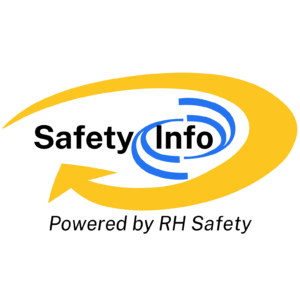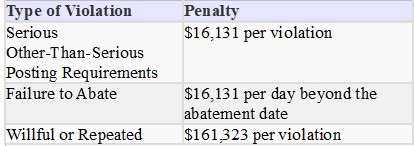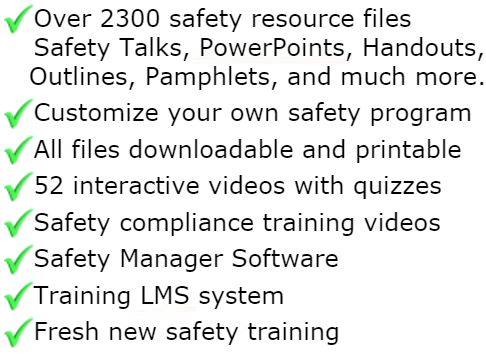
Hand & Power Tool Safety
Portable, bench or floor mounted power tools and equipment need routine maintenance, inspection and adjustments to ensure safe operation. Tool bits, blades and other changeable parts must be kept sharp and free from damage. Electrical systems, belts & pulleys and gears must be properly guarded to prevent exposing employees to hazards.
Hand Tool Safety
Hand tools are non-powered. They include anything from axes to wrenches. The greatest hazards posed by hand tools result from misuse and improper maintenance.
Appropriate personal protective equipment such as safety goggles, gloves, etc., should be worn due to hazards that may be encountered while using portable power tools and hand tools.
Around flammable substances, sparks produced by iron and steel hand tools can be a dangerous ignition source. Where this hazard exists, spark-resistant tools made from brass, plastic, aluminum, or wood will provide for safety.
Power Tool Precautions
Equipment. Make sure you know how to use any video equipment or that someone else is available to do so.
Power tools can be hazardous when improperly used. There are several types of power tools, based on the power source they use: electric, pneumatic, liquid fuel, hydraulic, and powder-actuated.
• Never carry a tool by the cord or hose.
• Never yank the cord or the hose to disconnect it from the receptacle.
• Keep cords and hoses away from heat, oil, and sharp edges.
• Disconnect tools when not in use, before servicing, and when changing accessories such as blades, bits and cutters.
• All observers should be kept at a safe distance away from the work area.
• Secure work with clamps or a vise, freeing both hands to operate the tool.
• Avoid accidental starting. The worker should not hold a finger on the switch button while carrying a plugged-in tool.
• Tools should be maintained with care. They should be kept sharp and clean for the best performance. Follow instructions in the user's manual for lubricating and changing accessories.
• Be sure to keep good footing and maintain good balance.
Almost every employee uses some type of tool during the day to accomplish tasks. Whether it’s a screwdriver or jack hammer, your role as a supervisor is to ensure, that the tools used for each job, are the right tool for that job. This includes making sure tools are used safely and are in good working condition.
Power Tool Safety
Tools may be powered by electricity, compressed air, hydraulics, belts or chain drives. Power used by tools to do work can posses a tremendous amount of energy that must be controlled by the worker using the tool. Hazards from tool power sources affect not only the person using it, but also to those working close by.
Keep it Sharp
Whether a power tool or a hand tool, if it’s designed to cut, keeping the cutting edge sharp is a safety priority. Sharp tools work better and require less force. When sharpening, adjusting or changing a blade, bit or cutting edge, ensure your workers disconnect the tool from the power source by unplugging electrical cords or removing hoses.
Bits, blades and cutting tool edges should be covered while on the shelf or in the toolbox. This not only helps keep the cutting edge from becoming dull, it also prevents hand injuries when a worker reaches for the cutting tool.
Check adjustments
If there are any adjustable parts of a tool, they will most likely be “unadjusted” when a worker needs the tool. Train your people to check all adjustments before using the tool.
Check for damage
Look at handles, tool edges, power cords, hoses & connections, switches, triggers, casings and attachments. Check hand tools for cracks dings and chips. Don’t use damaged tools. Generally, hand tools can not be repaired and should be thrown away. Power tools should not be jury rigged to work. Have repairs made only by someone who knows the tool repair craft.
Personal Protective Equipment
Almost all hand or power tool use requires wearing eye protection. If dust, fumes or mists are produced, the proper respirator must also be worn. Using gloves with powered equipment may be a hazard if there is a chance of the glove material getting caught in the equipment or material being worked.
Clothing Hazards
Long draping sleeves, baggy shirts, floppy pant legs are hazardous around powered equipment. Long hair should be pulled back so that it does not hang in front of the ears. All personal jewelry such as rings, necklaces and pendants should be removed before operating powered tools or equipment.
All materials in the members area for this topic index

GET INSTANT ACCESS
to THE MEMBERS LIBRARY
Safety materials created by safety professionals.
Access to the Safety Manager software.
Wide variety of safety videos and courses.
**Brand New** Safety Training Management System
Pre-Made Safety Materials Ready For Use
Created by experienced safety professionals & risk consultants. Saving you time, money, and risk of injuries.
95% of the work already done.
Below are the maximum penalty amounts, with the annual adjustment for inflation, that may be assessed after Jan. 15, 2024. (See OSHA Memo, Jan. 8, 2024).

**New OSHA HEAT 90 DAY**
>>Download Free HERE<<
**New 2024 OSHA 300 Form**
>>Download Free HERE<<
**Brand New**
Free with full membership subscription
Training LMS System
Ask The Safety Consultant
Safety Equipment Deal Finder

“SafetyInfo.com is the first go-to website for safety professionals and companies to use in establishing a solid safety program"
-Mike McKenzie, Certified Safety & Health Manager (CSHM), McSafety Solutions™
Note: You must have a full subscription to the Safety Library in order to use this material. Any use outside of your organization, for resell, or without an active membership is strictly prohibited and may result in prosecution under copyright infringement laws. Please contact us first, if you would be interested in reselling or using our materials for reproduction.
Inside the Members Library
Topic Index
Accident Prevention
Air Quality
Asbestos
Bloodborne Pathogens
Boilers
Chemical Safety
Compressed Gas
Confined Space
Construction
Construction Worksite
Cranes & Slings
Driver / Fleet Safety
Drug Free Workplace
Electrical
Emergency Management
Engineering Safety
Environmental
Equipment
Ergonomics
Fall Protection
Fire Safety & Prevention
First Aid
Flammable Materials
Forklifts
Hazard Communication
Hazardous Materials
Hearing Protection
Heat Stress
Hot Work
Housekeeping
Job Safety Analysis
Laboratory
Ladders
Lead
Lockout-Tagout
Machinery & Equipment
Material Handling
MSDS (SDS)
Medical & First Aid
Occupational Health
Office Safety
Off the Job Safety
Personal Protection
Process Safety
Record Keeping
Respiratory Protection
Silica Safety
Rules & Policies
Signs & Labels
Slips, Trips & Fall
Training
Terrorism Programs
Tool Safety
Vehicle & Driver
Violence Programs
Welding & Hot Work
Training Videos
Library Index
Training Materials
Videos/Courses
Talks
Articles
PowerPoint
Handouts
Training Overheads
Quizzes
Supervisor Briefs
Management Briefs
Safety Sessions
2 Minute OSHA Safety Talks
Pamphlets
First Aid Training
Supervisor Training
Hazardous Materials
Bomb Threat
Crossword Puzzles
Biological Agents
Forms & Documents
Forms
Checklists
Audit Guides
Inspections Guides
Signs & Labels
Environmental Audit Guides
Recordkeeping - OSHA 300
Sign & Label Maker
Safety Management Resources
Safety Manuals/Written Programs
Ergonomic Programs
Emergency Plans
Process Safety Management
Construction Safety
Occupational Health
Environmental
Topic Sheets
DOT Fleet-Driver
Hazardous Materials
Chemical Safety
Drug Free Workplace
Terrorism Programs
Development Guides
Safety Manager Software
Safety References & Graphics
Technical Safety Information
Posters
Topic & Fact Sheets
Development Information
Job Specific Safety Rules
Terrorism
Calculators
Safety Comic Strips
New Safety Training System
Schedule and train your employees with our materials. Add unlimited amount of employees. Record all progress and issue certificates. For group and individual training sessions.

